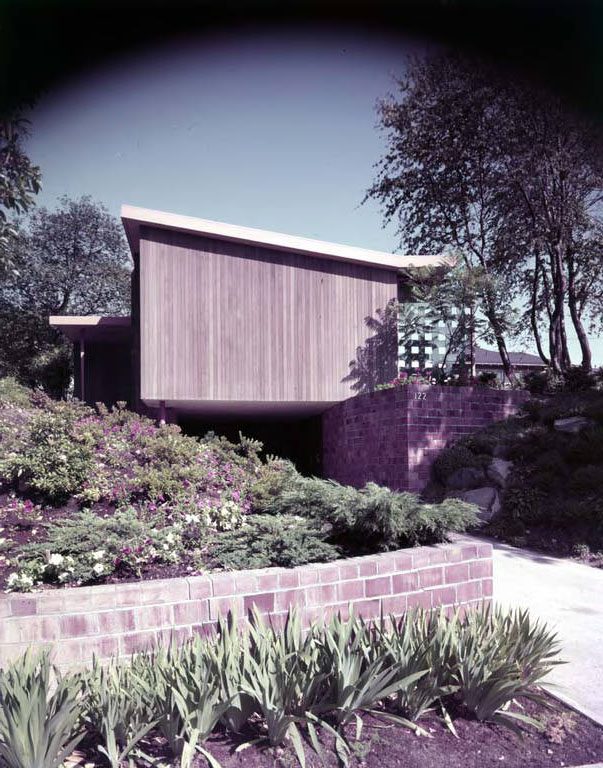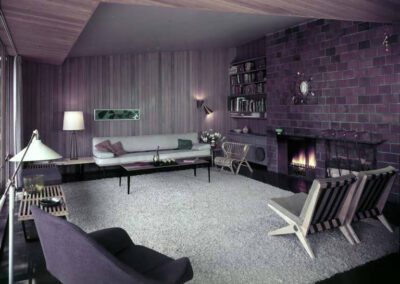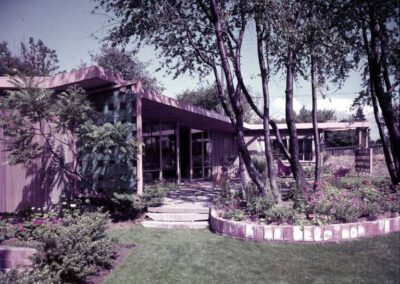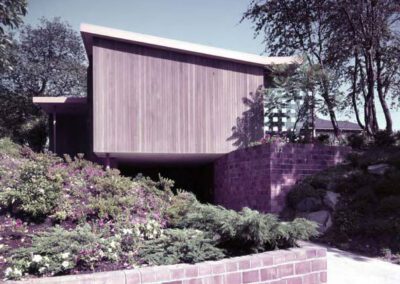
Rohrer House
122 37th Avenue East
Built 1949
The source of content for this page is from the Seattle Landmark Nomination Application,
After graduating, John Rohrer quickly became recognized for his skills and
worked for eighteen different over the next few years doing design and renderings. After apprenticing with architect B. Marcus Priteca, Rohrer worked during the war
years for the Austin Company as a drafter on defense projects and was slated to go into military service in late 1945. With the unexpected end to war in August 1945, he remained in Seattle and in 1946, joined Paul Kirk, James Chiarelli and others in renting space at Second & Cherry. Although these architects collaborated on larger commissions, they also took on
individual projects and the John and Ruth Rohrer house was solely John Rohrer’s design.
In spring quarter 1948, with the encouragement of Victor Steinbrueck, John Rohrer joined the UW Department of Architecture faculty as a part-time instructor beginning a 36-year teaching career.
Located in the Denny-Blaine neighborhood in east central Seattle, the Rohrer house is a roughly L-shaped building that responds directly to the form of its rectangular lot. The living areas of the house are all located one level above the street and open to a private yard that faces to the south and west. The one-car carport is located at sidewalk level under the living room. The basement is at this same level under the rest of the house.
A intentional spatial sequence leads from the sidewalk up a series of steps, along the solid north wall, to the front entrance on the north side of living-dining rooms. After passing through the front door, the entire glazed south wall of the living and dining rooms opens up to the private terrace and garden. This terrace, lawn and garden clearly read as a seamless extension of the living and dining rooms. The west end of the living room, above the carport entrance below, is closed, so interior and exterior living areas is completely invisible from the street.
The primary cladding material of the house is three-inch vertical cedar siding. Matching the cedar siding with a clear finish, is the soffit of the roof overhang above the glass wall along the south side of the living and dining areas. The cedar extends into the interior to form a portion of the ceiling of the living and dining rooms. Cedar is also used on the walls of these interior spaces, adding to the sense of a seamless inside-outside transition.
The north wall of the living area, adjacent to the front steps is vertically striated red brick. According to the Rohrer family, this brick was recovered by John Rohrer from a demolished building. Matching brick clads the north and south walls of the carport and the horizontal surface of the front porch.



